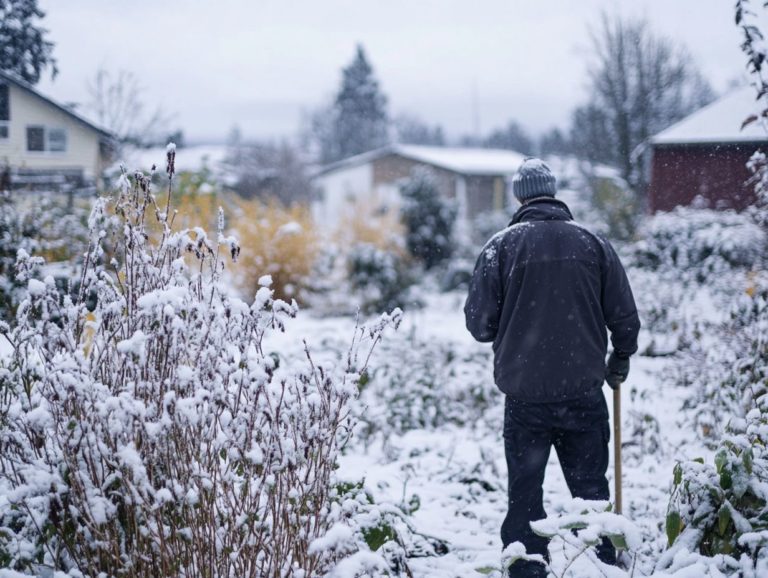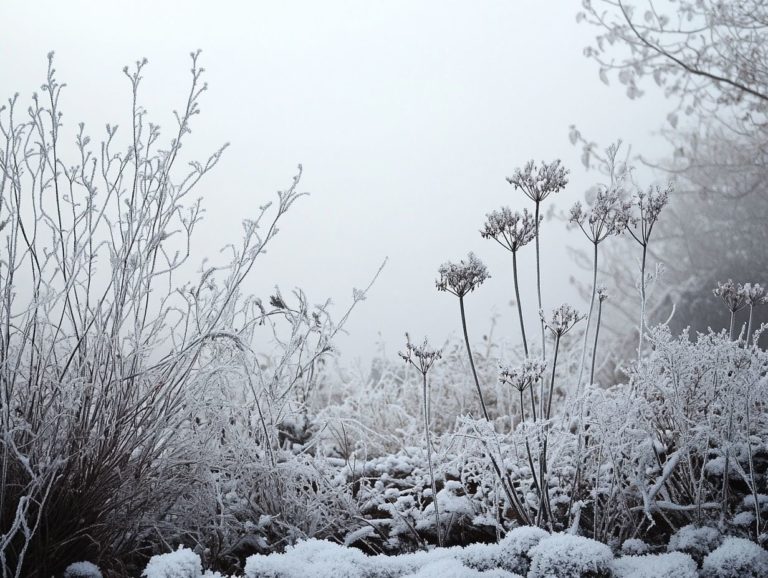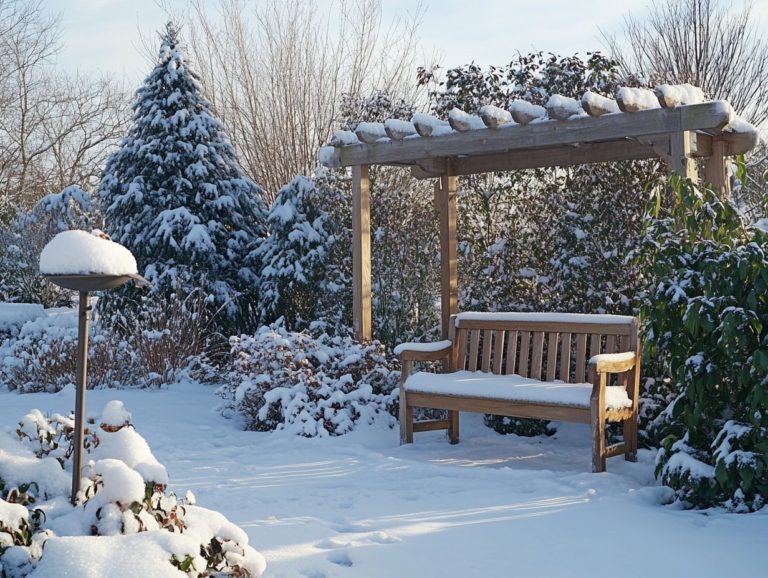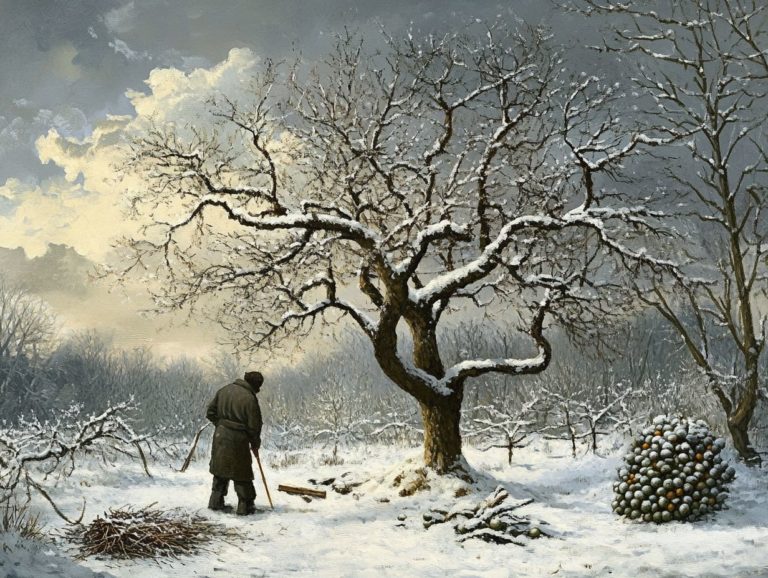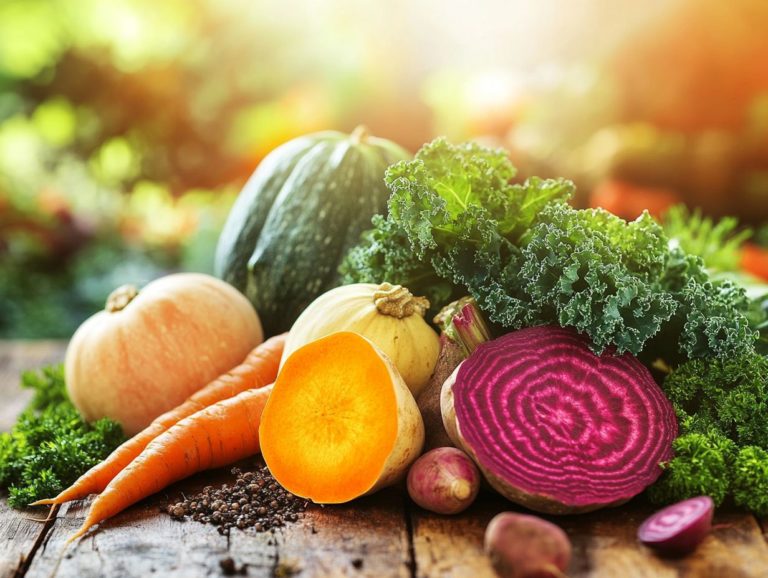Planning Your 2024 Garden in Cold Climates
As the chill of winter recedes, the thrill of planning your 2024 garden in cold climates takes the spotlight.
Grasping the unique challenges posed by cold weather is crucial for growing a successful garden. From choosing plants that can survive cold weather to preparing your soil and employing effective maintenance techniques, this guide will lead you through every step of the process.
Whether you’re a seasoned gardener or just starting out, you’ll uncover strategies to maximize your garden’s potential and revel in a vibrant landscape, even amidst the briskest conditions.
Contents
- Key Takeaways:
- Understanding Your Climate
- Choosing the Right Plants
- Adapting Warm-Weather Plants
- Prepping Your Garden Space
- Clearing and Preparing the Soil
- Creating a Protective Environment
- Planting and Maintenance Tips
- Maximizing Your Garden’s Potential
- Frequently Asked Questions
- What are some key considerations for planning a garden in a cold climate in 2024?
- When is the best time to start planning for a 2024 garden in a cold climate?
- How can I protect my garden from harsh winter weather?
- What types of plants are best for a 2024 garden in a cold climate?
- Can I still have a productive garden in a cold climate?
- What are some resources for planning a 2024 garden in a cold climate?
Key Takeaways:
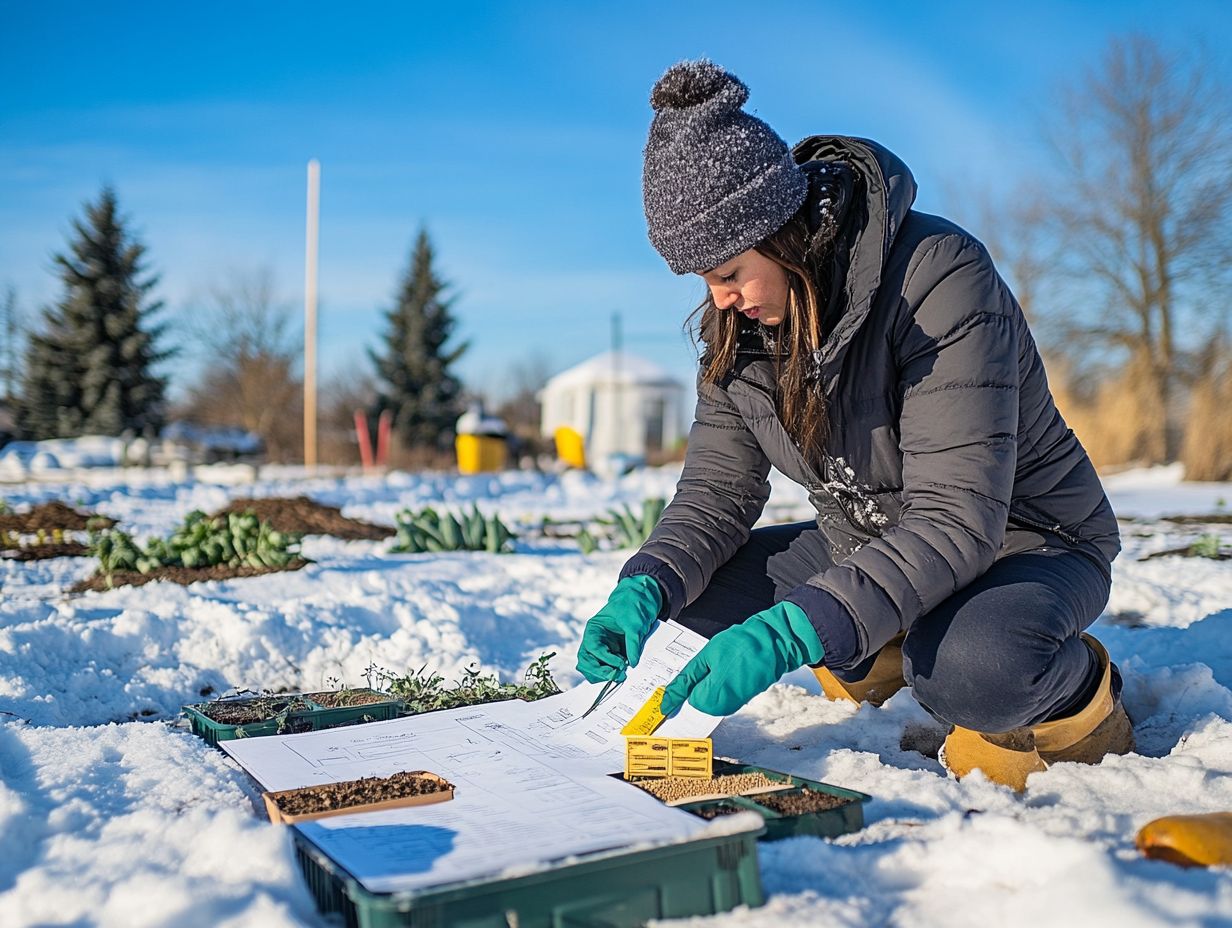
- Understand your climate and its factors to make informed choices for your 2024 garden in cold climates.
- Choose cold-weather resistant plants or adapt warm-weather plants to thrive in your cold climate garden.
- Prep your garden space by clearing and preparing the soil and creating a protective environment for a successful garden season.
Understanding Your Climate
Understanding your climate is essential for achieving success in gardening, particularly in regions like Wyoming. Here, the cold climate influences your choice of plants and gardening practices.
Familiarizing yourself with your specific garden zone, such as zone five, enables you to select top tips for planting in cold climates and design your garden layout with purpose.
The USDA Plant Hardiness Map is a valuable tool, offering insights into local climate conditions. It helps you optimize both your vegetable and herb gardens for maximum success.
Factors to Consider for Cold Climates
When gardening in cold climates, several factors play a critical role in determining your success, such as soil testing, plant hardiness, and understanding planting schedules in cold areas.
One of the most significant considerations is the timing of the first frost. This directly influences when you should plant tender vegetables like carrots and spinach. Understanding your local frost dates allows for precise planning and selection of suitable varieties.
Maintaining adequate soil moisture is essential; wet soil fosters healthy root development, which is crucial in cooler temperatures. Local experts can help you with the best plant varieties and care techniques to enhance your yield.
With their insights, both novice and experienced gardeners can make informed decisions that effectively address the unique challenges posed by colder climates.
Choosing the Right Plants
Selecting the right plants for your vegetable garden is crucial, especially in a cold climate. Focus on selecting plants for cold climate community gardens by choosing cold-weather resistant varieties such as brassicas, heirloom seeds, and a diverse array of vegetables.
Choosing the right plants will make your garden thrive amidst chilly conditions.
Cold-Weather Resistant Plants
Cold-weather resistant plants are your best allies for maintaining a thriving garden through the harshest winters. Options like spinach, kale, collards, and Swiss chard are exceptionally hardy and can transform your gardening experience.
These resilient crops don t just survive in lower temperatures; they excel, offering nutrients and flavor long after other plants have succumbed to the frost. For instance, spinach thrives in well-drained soil rich in organic matter, while kale appreciates regular watering and can withstand light frosts, which actually enhances its sweetness.
Collards, known for their robust character, require similar care, making them a staple for winter harvesting. Swiss chard, with its strikingly vibrant stems, adds versatility to your garden as it can be grown for both its leaves and stalks.
By incorporating these cold-weather champions into your gardening repertoire, you can enjoy plentiful yields and secure a sustainable food source. For more detailed guidance, consider planning your winter vegetable garden layout, even when conditions are less than ideal.
Start planning your winter garden today and watch it flourish even in the cold!
Adapting Warm-Weather Plants
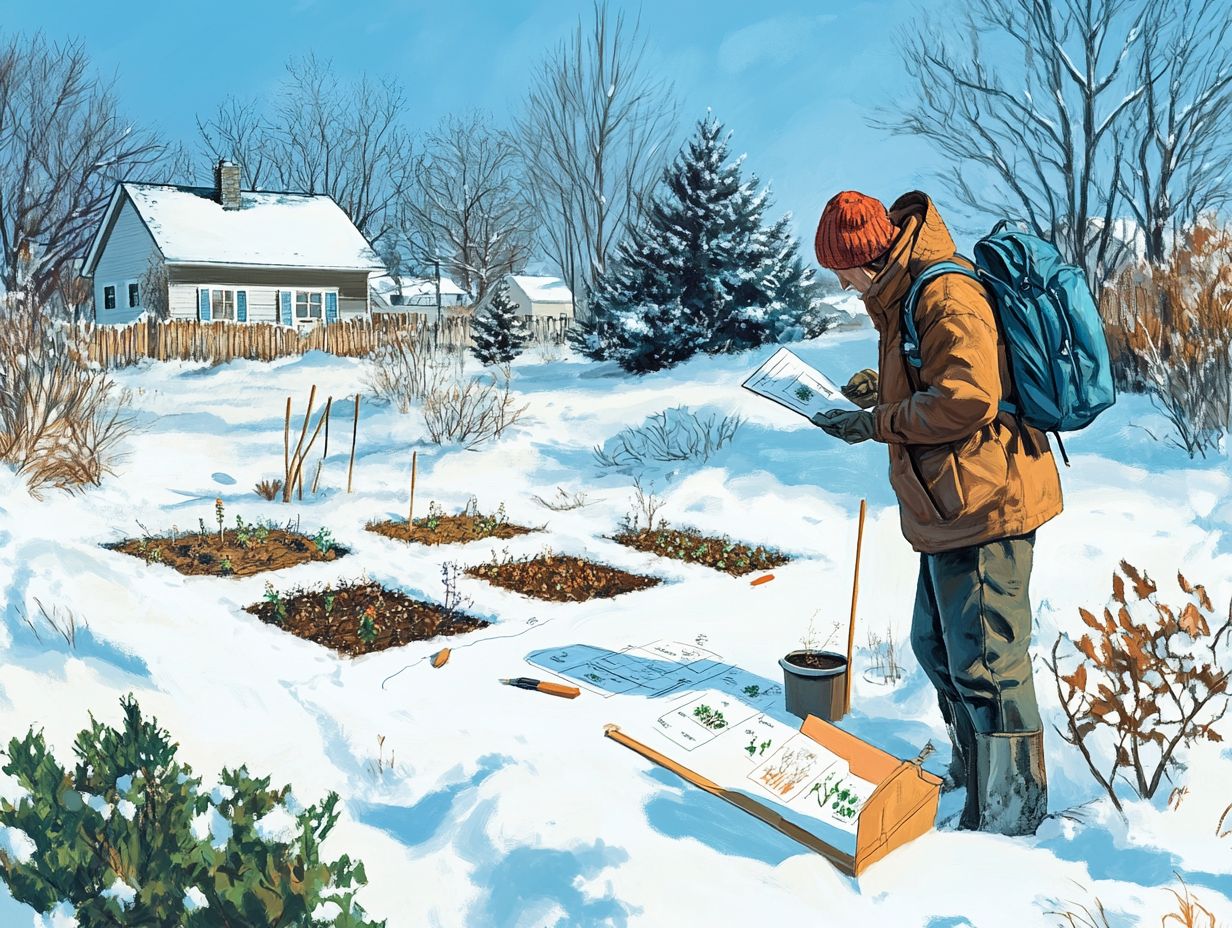
Adapting warm-weather plants for success in colder climates calls for some new methods, and utilizing season extenders like greenhouses, cold frames, and hoop houses is key.
By effectively employing these tools, you can create a more favorable local weather condition that shields your tender plants from frost and the unpredictable embrace of fluctuating temperatures.
Take tomatoes and peppers, for example these sensitive souls often struggle in cooler conditions. With the added warmth from a greenhouse, they can truly thrive.
Incorporating heavy materials that hold heat, like dark stones or water barrels within these structures, will help you further stabilize those pesky temperature swings.
These season extenders boost plant health and prolong the growing season, allowing for multiple harvests and increased yield. This elevates the entire gardening experience during those transitional seasons, turning what could be a challenge into a rewarding adventure.
Prepping Your Garden Space
Preparing your garden space is a crucial foundational step that requires meticulous soil preparation.
You ll want to ensure that the soil is well-insulated and implement pest control measures specifically designed to meet the unique needs of your crops.
This approach helps your garden grow well.
Clearing and Preparing the Soil
Effective soil preparation is essential for cultivating a thriving garden. Start by clearing away any debris and enriching your soil with organic matter.
Don t underestimate the importance of optimal soil moisture; employing proper irrigation techniques is key to your success.
Understanding the nutrient levels in your soil is crucial. This knowledge allows you to tailor your gardening practices to meet the specific needs of your plants.
Regular soil testing is a smart move, as it not only identifies nutrient deficiencies but also guides you in finding the right balance of fertilizers or amendments necessary for robust growth.
Incorporating organic gardening practices, such as using compost and mulch, can significantly boost your soil’s fertility and structure while fostering beneficial microbial life.
Throughout the growing season, maintaining soil moisture is vital. Techniques like drip irrigation or rainwater harvesting will help you conserve water, ensuring your garden flourishes even during dry spells.
Creating a Protective Environment
A protective environment is vital for your plants’ success! Use techniques like row covers, cold frames, and hoop houses to shield your plants from frosts and pests.
These methods not only protect your young plants from harsh weather but also help maintain consistent temperatures and moisture levels.
For instance, row covers can trap heat during chilly nights while still allowing sunlight to nourish your plants, creating an ideal growth environment.
Cold frames offer a mini greenhouse effect, enabling you to extend your growing season by safeguarding your crops against unexpected cold snaps.
Hoop houses take this a step further, providing a larger protective dome that encourages faster growth and keeps various pests at bay.
When you implement these techniques effectively, you can significantly enhance plant health and overall garden productivity, leading to richer harvests and a thriving ecosystem.
Planting and Maintenance Tips
Implementing effective planting and maintenance tips is essential for cultivating healthy plants and reaping bountiful harvests.
By focusing on key aspects such as plant maturity, timing for optimal harvest dates, and careful vegetable selection, you can elevate your gardening game to new heights.
Get started on your preparation today to ensure a bountiful harvest next season!
Best Practices for Planting in Cold Climates
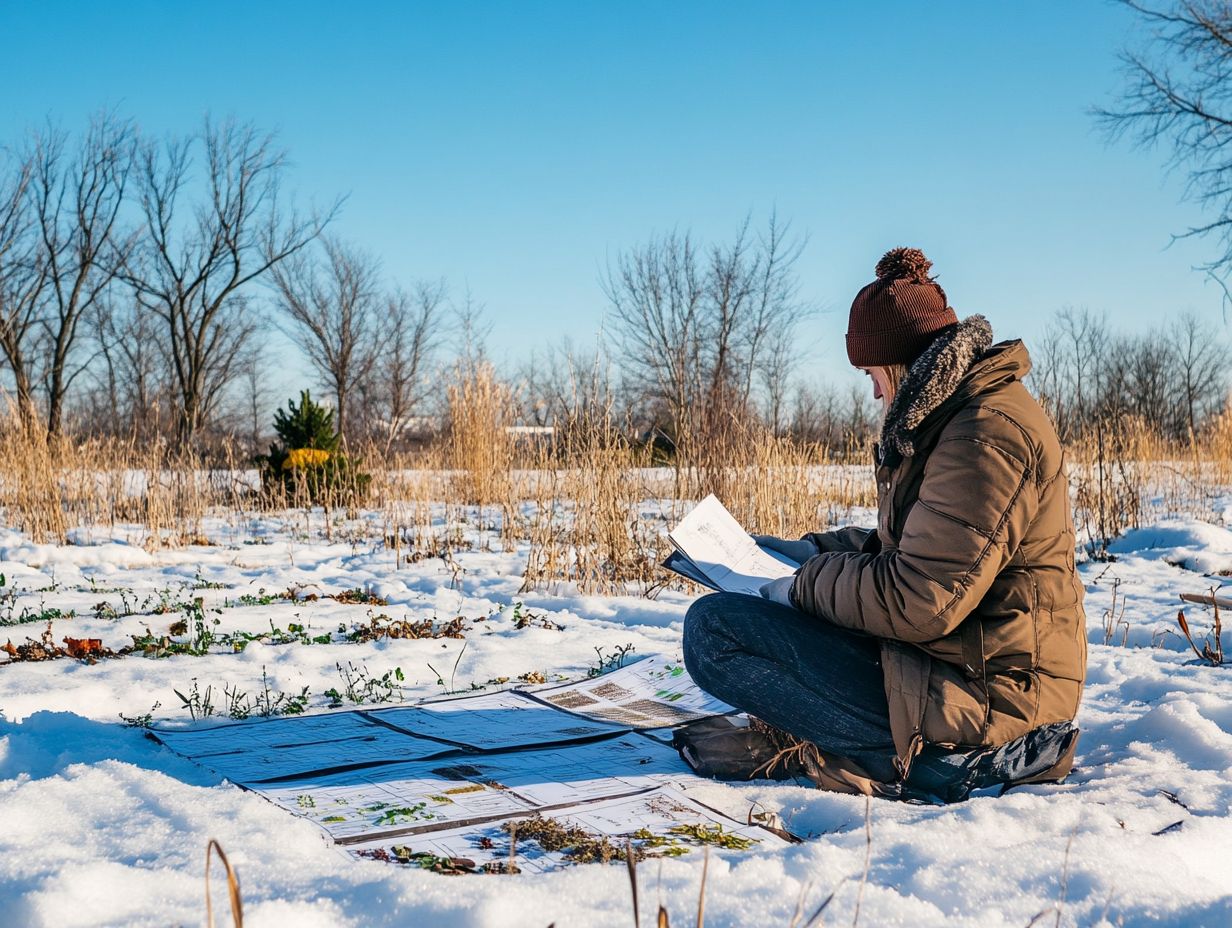
Planting in cold climates requires best practices. Focus on strategic scheduling and preparing your soil for spring to give your seedlings the best chance for success.
It’s essential to research local frost dates to determine the best time to start planting. Consider cold-hardy varieties that can withstand the chill. Additionally, updating your cold-climate gardening resources can provide valuable insights. Don’t shy away from using season extenders like cloches or tunnels to create a cozy microclimate for your plants.
Using mulch is a smart choice. It helps retain soil moisture and acts as a thermal blanket, insulating those precious root systems. By regularly monitoring soil temperature and moisture levels, you’ll create a robust environment for your seedlings, setting the stage for a flourishing garden.
How to Maintain Your Garden Throughout the Season
Maintaining your garden demands a proactive approach to plant care. You’ll monitor soil moisture levels, control pests, and prepare for the transition to a fall garden.
This ongoing commitment to maintenance ensures your plants thrive, resulting in a vibrant landscape. Regularly watering your garden stabilizes soil temperatures, which is essential during unpredictable seasonal shifts.
Incorporating organic fertilizers replenishes vital nutrients, encouraging growth and resilience. Implementing vigilant pest control measures whether introducing beneficial insects or using natural repellents is crucial for protecting your garden from infestations.
As summer fades, embrace fall gardening practices like planting cover crops or applying mulch. These steps set the stage for colder months, fostering a sustainable and productive environment.
Maximizing Your Garden’s Potential
Maximizing your garden’s potential means embracing a variety of techniques. Consider utilizing season extenders to prolong your growing period and gaining insights into the advantages of greenhouses.
Implement strategies like changing where you plant different crops each year. These practices enhance productivity and promote sustainability in your garden.
Utilizing Season Extenders and Other Techniques
Utilizing season extenders and innovative techniques can significantly elevate your gardening success. They prolong the growing season and shield your plants from adverse weather conditions.
Incorporating structures like cold frames, hoop houses, and greenhouses creates a more controlled environment for your plants. Cold frames are advantageous for starting seedlings earlier in spring, allowing for an extended harvest.
Hoop houses are a cost-effective option for larger spaces, providing ample protection while allowing sunlight to nourish your greens. Greenhouses serve as a year-round sanctuary for delicate plants, ensuring you can enjoy fresh produce and vibrant blooms even during harsh winters.
Integrating these tools into your cold climate gardening enhances your yields and fosters sustainable practices, making the experience rewarding.
Frequently Asked Questions
What are some key considerations for planning a garden in a cold climate in 2024?
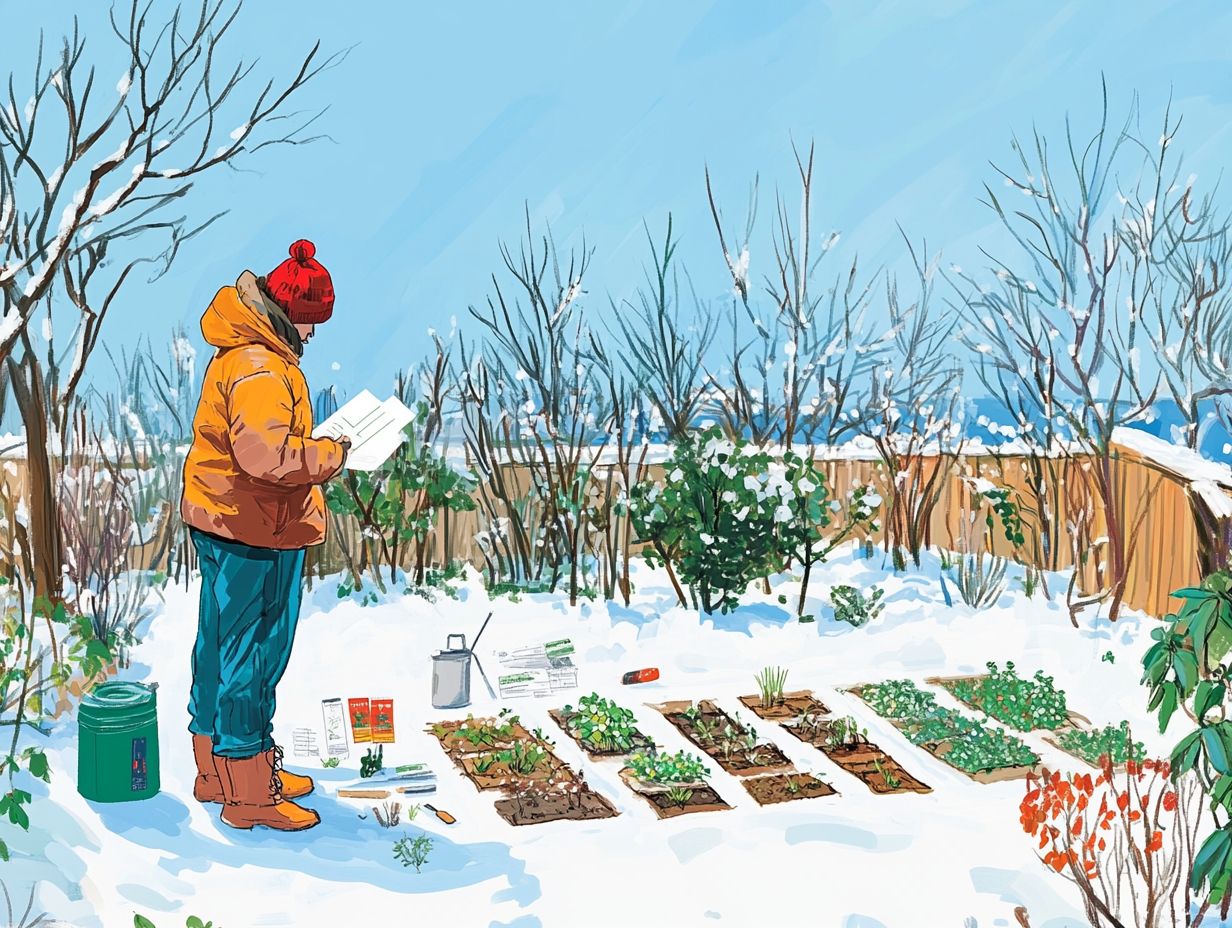
One of the most important things to consider is your hardiness zone. This will determine which plants are best suited for your climate. Plan for changing weather patterns and temperature fluctuations.
When is the best time to start planning for a 2024 garden in a cold climate?
Start planning now for the best results! The earlier you begin, the better prepared you’ll be for unexpected weather changes. It’s recommended to plan at least 6-8 months in advance.
How can I protect my garden from harsh winter weather?
Protecting your garden from the cold is essential. Use mulch to insulate the soil and cover plants with frost blankets.
Building a cold frame or hoop house can also help. These are structures that protect plants from cold weather. Additionally, planning a seasonal rotation for cold climates is important. Choose plants that can survive in cold weather and prepare your soil well.
What types of plants are best for a 2024 garden in a cold climate?
Great options for cold climates include perennials like peonies, irises, and daylilies. You can also grow vegetables like broccoli, kale, and Brussels sprouts.
Adding evergreen trees and shrubs will bring color and texture to your garden during winter.
Can I still have a productive garden in a cold climate?
Absolutely! You can have a thriving garden even in the cold. Use cold frames or greenhouses to extend the growing season.
Choose plants that can handle frost and snow. Techniques like succession planting can also boost productivity.
What are some resources for planning a 2024 garden in a cold climate?
Many resources are available to help with your garden planning. Online tools like the USDA Plant Hardiness Zone Map and frost date calculators are invaluable, especially when using guides such as Spring Awakening: What to Plant in Cold Climates.
Local gardening clubs, extension offices, and nurseries can provide tailored advice for your specific climate.

